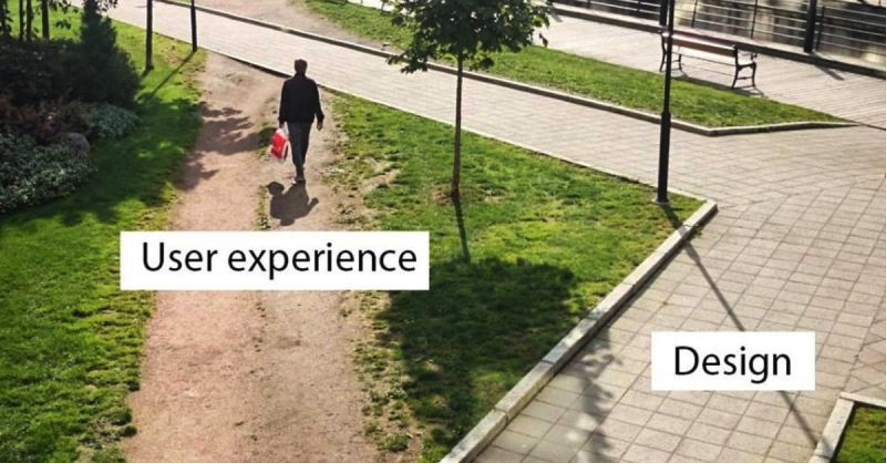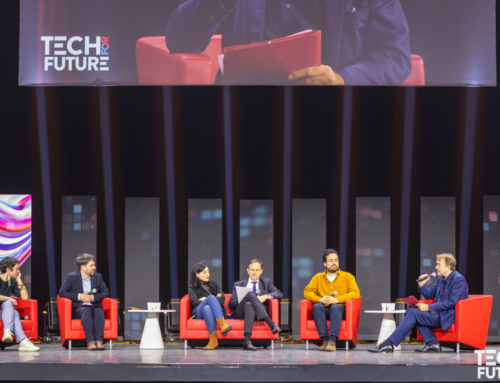UI (User Interface) refers to the aesthetics and visual comfort of the elements with which users interact to access a product or service. UX (User Experience), on the other hand, refers to the user’s experience of the product or service.
But why talk about UX and UI in the field of education?
The importance of user experience in innovation adoption
This notion is an essential consideration when designing a new solution. It is even more so in a digitalized world, where teaching methods are becoming increasingly digitized. Working on the UX of a digital solution optimizes the user’s experience, making it easier and more fluid.
A site that enables us to find what we’re looking for with a single click will always be more pleasant than an interface on which we waste our time. We also tend to lose patience and abandon our objective if we encounter too many obstacles or misunderstandings along the way. UX is also a way of building user loyalty, so that users will be happy to come back.
These situations apply not only to our everyday digital exchanges, but also to educational technologies! Students and teachers alike live in a digitalized, fast-paced and fluid world, and they expect the same from the solutions they use!

Let’s take an example : university communication with students. If some information is announced on an LMS platform, others transmitted by e-mail, and still others by display, the multiplication of sources confuses the user, who has to search for information in different places. Bringing all this information together in a single dematerialized location is undoubtedly one way forward. But the UX of the digital solution will have to be thought through if users are to be won over.
Thinking in terms of UX leads to the centralization of information and offers the user a unified experience offering all content in the same space in a simplified way.
In this way, a mobile application can notify students of new information in real time, giving them access to essential information at any time. This one-click application brings together the most important information, organized according to profile. Its use is simple, fluid and optimized. The result is an enhanced student experience and greater satisfaction.
To find out more about Mobile Apps, meet Victor Wacrenier, co-founder of AppScho, in an Interview by Simone.
But if experience is essential, the aesthetics of the interface count too !
It’s something we don’t like to hear, but aesthetics count. We’re not asking our solution to be the most beautiful, but the most readable and comfortable possible. In terms of design, legibility depends as much on the choice of colors, fonts and content hierarchies as on the style of the interface.
If content is essential, so is form. It’s how we capture users’ attention, by making content more attractive. It’s also about providing comfort and visual pleasure! In recent years, the notion of pleasure has taken on a new role in higher education with the arrival of digital technology and gamification.
Enjoying learning increases memory capacity by 20%! Providing students with a pleasant experience through the design and comfort of their work tools makes them more committed and improves their learning!
Gamified collaborative platforms have understood this. Gather Town, for example, is an open-source online platform based on the codes of video games. In a virtual campus, the platform lets you move around using your avatar. Whether entering a workspace with fairly simple functionalities, such as videoconferencing, or private meeting rooms with other participants, the user has a real experience, which is much more engaging and enjoyable. The playfulness and design of the course and experience make them more attractive.
Wooclap is one of the hottest EdTech companies of the moment!
Based on the simple idea that learning needs to be given a new dimension, both Wooclap and Wooflash are solutions designed to be attractive and offer an interactive experience.
Meet Fabien Maurin, Head of Sales at Wooclap, in an Interview by Simone :
What if UX was also a challenge for universities?
Whether in terms of UX or UI, many of the solutions used by universities can be improved in this area. While universities sometimes tend to favor solutions developed in-house or available as open source, the fact remains that UX/UI should not be neglected.
“One of the challenges of digital at universities is to have a more UX-centric entry point. In particular, we need to review our digital platforms and tools to improve UX.” Jeanine Berthier, University of Caen
Watch the #Univ4Good interview with Jeanine Berthier :
UX/UI design also makes solutions easier to understand and grasp. The more the user navigates with ease and pleasure, the more time he or she takes to explore the functionalities on offer, discovering what is most useful to him or her, and becoming more efficient and effective with each visit. As a result, when it comes to learning something – knowledge or usage – they’ll get to the point more quickly, which is the goal of every learner.
Innovation is essential in our pressurized world, but thinking about those who will have to “use” the innovation makes a huge difference to its acceptance and spread. Digital technology has accelerated our thirst for novelty, but it has also accelerated our ability to adopt what we use and behave in our daily lives.
The crisis has shown us that universities know how to innovate and adapt to change, but do all the solutions deployed offer a pleasant experience that appeals to users? If we ask students, the answers are mixed for the time being, and show that there’s still work to be done. However, the road ahead isn’t so long if you’re willing to take a serious look at the subject 🙂








